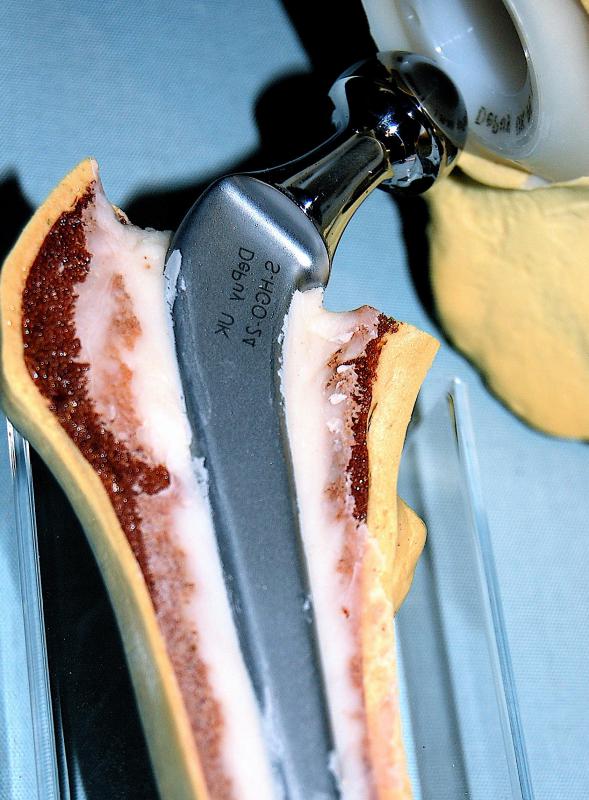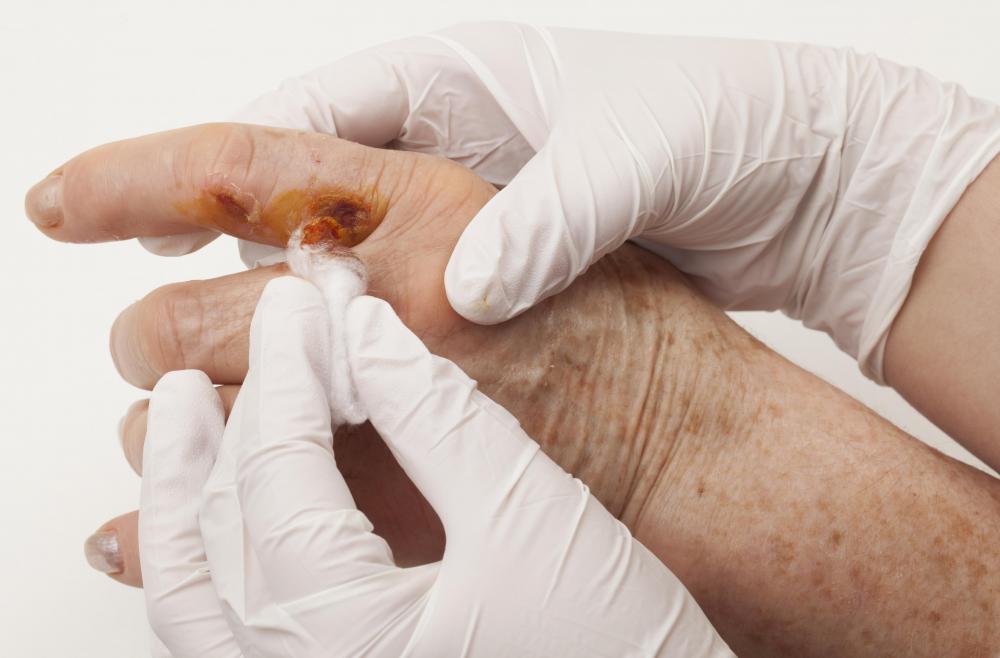At TheHealthBoard, we're committed to delivering accurate, trustworthy information. Our expert-authored content is rigorously fact-checked and sourced from credible authorities. Discover how we uphold the highest standards in providing you with reliable knowledge.
What is the Treatment for Necrosis?
There is no treatment for tissue that has already died. Though the necrosed tissue is dead, the tissue in the surrounding area can be saved by removing the dead tissue and helping to restore blood flow to the affected area. In a specific type of necrosis, known as avascular necrosis, there are several different treatments that are used to prevent further damage.
Once necrosis sets in, there is nothing that can be done to treat it. The tissue that has died cannot be recovered, and if the damage is extensive enough, the damaged tissue must be surgically removed from the living person. A large section of tissue that dies is known as gangrene, which can be fatal if left untreated. In extreme cases of gangrene, a patient may have to have a large section of tissue or even an entire limb removed. Removing the gangrenous tissue can save a person's life.

Though there is no treatment for the tissue that has already been affected by necrosis, improving circulation in the surrounding tissue can help prevent its spread. Doctors may prescribe medications that prevent blood clots, which can make the condition worse by blocking blood flow to nearby areas. Additionally, physical therapy can be used to exercise the affected area.

Avascular necrosis, which is also known as aseptic necrosis, is a condition in which a patient loses bone tissue. The condition develops when blood flow to a bone is limited or cut off. Eventually, this lack of blood flow causes the bone tissue to die.
Treatment for this condition usually starts with medication and physical therapy, though most patients eventually require surgical treatment. There are a few medications that can be used both to control pain and to help prevent a build-up of blood clots or lipids that may make the condition worse. Improving blood flow to the affected joint is a primary concern and many doctors recommend decreasing the weight applied to the joint as well as practicing low-stress exercises.

If the condition is caught in the early stages, it is possible to treat it by removing the affected section of bone. When this is done, the condition is eliminated. The missing section of bone, if it is substantial, may be replaced by a bone graft. If the condition is not caught early enough, the affected joint may need to be replaced surgically. Joint replacement is most often performed on the knee or hip, when other treatments have been unsuccessful or when the condition was not caught soon enough.
AS FEATURED ON:
AS FEATURED ON:


















Discussion Comments
Does anyone have avascular necrosis of the hip bones?
My dad has been diagnosed with this. He had been experiencing extreme pain and difficulty walking. He had an MRI last month which diagnosed the necrosis.
He has been put on a medication called infliximab. It's an autoimmune medication used to treat necrosis. His pain has lessened since starting the medication but his doctor thinks that my dad will have to get a hip replacement.
@SarahGen-- A tooth with pulp necrosis does not have to be pulled out. Dentists usually treat it with root canal therapy. They basically remove the pulp from the tooth. But this doesn't mean that the problem is completely fixed because tooth pulp never grows back. Pulp is the tissue that feeds and protects the tooth and without it, the tooth is basically dead and can become weak and brittle over time.
But this is still a better solution than pulling the tooth in my opinion. At least it will put an end to the pain and anyone who has had this knows how extremely painful pulp necrosis is.
What's the treatment for dental pulp necrosis? Is there a treatment or does it mean that the tooth has to be pulled out?
Post your comments